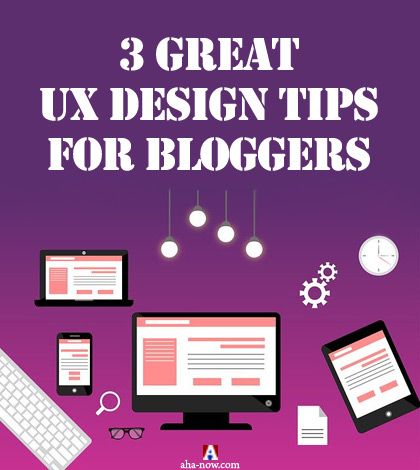3 Great UX Design Tips for Bloggers in 2020

Table of Contents
Your blog or website design matters a lot. If your website has a pleasing look and is easy to navigate, visitors will like and trust it more. It helps if your website is flawless and gives a good first impression. Here are some effective UX design tips that you can implement on your blog or website. ~ Ed.
Blogging is a popular content marketing tool used by individuals and companies to maximize traffic, leads, and sales. Bloggers write compelling content that attracts people to their websites.
If you want to get into blogging, you first need to be a great writer – or have tools on hand like Grammarly to help you become one. However, alongside exceptional blogs, your site also needs to be visually appealing to really captivate your reader’s attention.
Ultimately, you need to make a good first impression if you want to wow your reader with aesthetically pleasing user experience (UX) design.
If you have the right user experience strategy in place, you’ll gain a loyal following and become trusted by your readership. This will encourage your audience to engage further with you, like sign up for email updates or purchase a product or merchandise.
Before anyone buys anything online, they need to trust you to provide them with valuable products/services and believe in your brand. To get to that point, your website needs to be flawless and your UX seamless.
Optimizing your site for UX isn’t for beginners – you need to do your research! If you’re really invested in making your blog a business, you might even need to hire a digital marketing agency to stay ahead of the competition. But for those starting out, let’s get you brainstorming with 3 tips to improve your website’s UX design in 2020!
3 Effective UX Design Tips for Your Blog or Website
All you need to do is create simplified navigation for your website and give it a pleasing look. Here’s how you can achieve that with the following UX design tips.
Make Navigation Simple
The layout of your website and individual blogs needs to be effortlessly accessible for your readers, so they have a great experience. They won’t come back if they can’t easily access what they’re looking for. Ask yourself:
Will they be able to search and view posts from a specific date or under a certain topic? Or will it take them forever to find the information they need?
As a blogger, you want your information to be easily found. Bear in mind that most readers simply don’t have the time to go clicking through long lists of pages before they find an article they like. They want results fast, so you need to ensure that you can provide a speedy service.
That’s why it’s essential to anticipate what your visitors will be looking for on your site and edit the layout.
Do you feel that a drop menu should be incorporated, or are your existing ones too complicated? See how you would react as a first-time visitor to your website, and if you can smoothly navigate through your blogs. You could even get a friend who’s never visited your site to test this for you and give you tips on how to improve.
To make navigation simple rely on these features:
- Menu
- Search box
- Archives page
- About page
- Contact page
A well-thought-out menu and the addition of a search box are integral as you publish more content and grow your site. Obviously, put your new content front and center, but it’s important that your audience should be able to find old posts easily too.
Check Your Typography
Typography is the technique of displaying written words. If yours looks messy, jumbled, or your fonts are hard to read, your audience will immediately be turned off. Laying out your content attractively is a major element of building a fluid UX design for your blogs, making it easy for your audience to stay engaged with your content.
The three major parts that this encompasses are:
- Font size
- Line spacing
- Color
These three areas can certainly enhance your site’s UX design and give it a more pleasing look.
Font Size
The size of your font is very important. Did you know that the default font size for monitors is 16 pixels? Your font size should adhere to this. 16 pixels is the minimum you should consider. If it’s too small, you risk losing readers – they shouldn’t struggle to read your content.
Line Spacing
The width of your text lines and the height between each one is also another area to consider as you want your blog to appear as natural as possible to your readers. Ideally, aim for line widths with no longer than 75 characters and ling spacing of around 150%.
Color
The color of your text is equally important. We recommend using a dark tone over a light background. This contrast will help your blog stand out by eliminating any burden or strain on your reader’s eyes. Be sure to review your text color!
Aside from typography, get into the habit of writing in short paragraphs, concise sentences, and using multimedia like videos and images to break up walls of text. This can be a difficult transition from academic writing, where you’re taught to write in long-form and use complex language – but this doesn’t fly with mass online readerships.
The Power of Color Theory
Your blogs need to be presented using colors that fit well together, and any color patterns should be easy on the eyes. You will want to invoke the right emotions and keep colors consistent throughout your blogs.
Each color conveys a different mood – yellow evokes happiness, while blue gives tranquility. Match your subject matter with colors that work – don’t choose a black background and white text for a blog about beach traveling.
Consider a fixed color theme to use across your whole website. This also goes towards building a brand – can you create a unique but attractive color scheme that will instantly remind your readers of you if they see it elsewhere?
Bottom Line
Effective UX design encourages new readers to keep coming back for more content. Ultimately, by building a loyal readership, you can begin to monetize your blog and brand. If you already sell products through your website, consider updating your UX to see a difference in profit.
Regardless of where you are in your blogging journey, if you want to stay ahead of the competition in the saturated blogosphere, these top three tips will keep UX design on your mind.
Over to you
Have you worked on the UX design of your blog or website? Share your tips and experiences to make your website create a good first impression and become trusted by your readership.
Disclaimer: Though the views expressed are of the author’s own, this article has been checked for its authenticity of information and resource links provided for a better and deeper understanding of the subject matter. However, you're suggested to make your diligent research and consult subject experts to decide what is best for you. If you spot any factual errors, spelling, or grammatical mistakes in the article, please report at [email protected]. Thanks.











Bloggers get so caught up in frequent writing that UX is the last thing on their radar.
But UX matters a lot, especially if you want your readers to keep coming back to your blog. No one wants to spend time on a site that is difficult to navigate and read through.
A 404 page can also help in improving the user experience for any unfortunate broken links.
Hi Gilchrist
Good to see you here on Harleena’s space with an informative piece on Blogging and the style.
Yes those are the important areas a blog developer or the write needs to look into. The look, style, color, font size and above all the typography etc are some off the things we need to carefully look into.
Thanks for covering the areas in detail.
Keep writing. I found this post curated on an IM platform and I upvoted it and commented.
Best
Phil
A great blog on UX Design. Thanks for sharing this amazing piece of content.